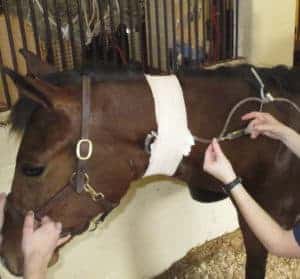
New In-Shoe Sensor Helping Horses Stay Sound
These state-of-the-art pressure sensors that can measure the forces at more than 1,000 location on the hoof.


These state-of-the-art pressure sensors that can measure the forces at more than 1,000 location on the hoof.

While training breaks are needed, prolonged rest increases the time it takes a horse to race.

War horses are remembered on Veterans Day through ceremonial parades and monuments around the world.

Assess your horse’s overall diet, nutrient needs, health status, and workload before supplementing him.

Recent research proved snakes harbor the Eastern equine encephalitis virus and play a role in transmission.

Breeders might soon be able to use sex-sorted stallion semen to pick the sex of their future foals.

Research suggests a strong human attachment could lead to impairment of a horse’s problem-solving abilities.

The recently identified leishmaniasis case in a Morgan mare is America’s first published indigenous case.

Mosquito-borne diseases in horses increase in wake of Hurricane Isaac.

Veterinary professors in England develop “Anato-Rug” to help students study equine anatomy.

More than 70 horses on 22 premises in Western Canada have tested positive for EIA thus far in 2012.

Athletic horses exposed to airborne particles could experience enough mucus buildup to limit performance.

Study finds that modified version of laryngoplasty surgery is effective in treating roaring in horses.

Study finds giving antibiotics before long-distance transport could reduce fever and decrease airway bacteria.

Emerging and re-emerging diseases can devastate equine populations and cost the industry millions of dollars.

A recent study revealed a “disproportionately high accident rate” in humans working with and around horses.
Stay on top of the most recent Horse Health news with